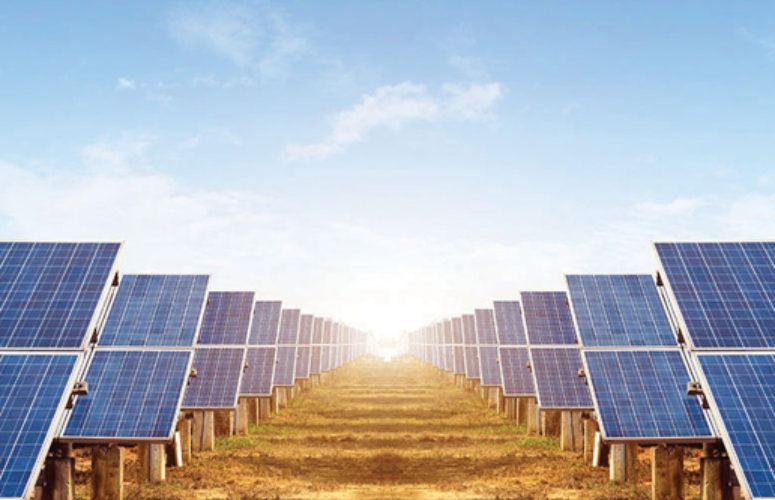
New Jersey’s New Energy Master Plan
The governor has outlined ambitious goals to help the state convert to 100% clean energy by 2050 – but at what cost?
By Jennifer Lesser, Contributing Writer On Mar 13, 2020In 1977, New Jersey enacted a law that would require a regularly-updated Energy Master Plan (EMP) to address the issue of electricity in New Jersey, from the production and distribution to consumption and conservation. Gov. Phil Murphy signed an order for the EMP in 2018 to outline the strategic vision for the state’s role in the use, management, and development of energy, and the current plan, which was signed this past January, contains ambitious goals designed to help New Jersey become a leader in the 21st century energy economy over the next decade.
According to Ray Cantor, vice president of government affairs for the New Jersey Business & Industry Association (NJBIA), in its current form the EMP is a holistic plan that looks at all energy consumption across the entire economy in New Jersey. “Its overall intent is to meet the carbon reduction goals of the Global Warming Response Act, as well as the governor’s goal to have a 100% clean energy economy by 2050,” he explains.
However, there have been some concerns related to how the initiatives outlined in the EMP will actually be implemented, which range from methods to incentivize the use of “clean” technological advances within the commercial and public transportation industries, to new plans for grid modernization and maintenance. “While we are supportive of the EMP’s primary goals, the question really becomes how do we get there … and what’s it going to cost us?” Cantor says. “We don’t want to make any short-term decisions that could lock us into policies that we may later regret.”
Perhaps most significantly, the EMP was designed to outline a path for the conversion to 100% clean energy by January 1, 2050. The plan incorporates the governor’s offshore wind, battery storage, and community solar goals, while also outlining policies targeted towards growing New Jersey’s clean energy economy, reducing the state’s carbon footprint and advancing new technologies while striving for reliability and affordability.
“There’s a lot included in the plan that’s very ambitious, and who doesn’t want a cleaner, more energy-efficient world?” asserts Erick Ford, executive director of the New Jersey Energy Coalition. “But at the same time, we have to make sure we have an economy that can support these goals, and that we work towards achieving them in a way that’s affordable for our residents and businesses.” For example, natural gas prices are at an all-time low, and Ford notes that access to this affordable source of energy is critical for New Jersey residents.
“There are two driving factors as we seek to reduce carbon and have cleaner energy – and one of those is obviously cost,” Cantor agrees. “We don’t want to drive businesses and residents out of New Jersey because they can’t afford to turn on the lights or heat their house, and at the same time, we need to make sure our power systems are reliable.”
Though environmentalists have been advocating for a switch to 100% renewable energy sources like solar and wind, Cantor notes that current technology simply can’t support that type of change yet. “The grid needs to have a big source of power, whether it’s natural gas or nuclear power – or both – in order to be reliable and affordable,” he adds. “We hope to be able to make significant but incremental improvements, and continue to modify the plan as technology progresses.”
Ford notes that another component of the plan calls for a restructuring of current energy efficiency programs, and in order to achieve these goals, businesses might expect to see a utility regulation process known as decoupling. The process refers to policies that are designed to separate, or “decouple,” utility profits from their total electric or gas sales to allow them to invest in energy efficiency initiatives and promote renewable energy alternatives without having to take a hit to their bottom line.
Utilities like JCP&L will play a crucial role in helping the state achieve its energy-efficiency goals. According to Jim Fakult, president of JCP&L, since the primary goal of the EMP is to achieve a clean energy future for New Jersey, the company continues to invest in projects to develop a more efficient and smarter grid that will be more resilient to severe weather, while enhancing renewable energy initiatives.
In October, JCP&L was recognized as a New Jersey Sustainable Business for its continued focus on environmental awareness and sustainable practices and policies. “We look forward to our continued working relationship with the state and Board of Public Utilities as they undertake the complex task of implementing both the proposed Energy Master plan and the 2018 Clean Energy Act,” he says. “[The company] remains committed to the responsible use of natural resources and the advancement of sustainable practices to ensure a clean environment for our families, communities and the customers we serve.”
To implement the goals of the EMP, Fakult notes that significant investments in electric transmission and distribution infrastructure will be required to enable the expected increase in renewable resources, such as solar and offshore wind. Utilities will also play a key role in ensuring that sufficient electric vehicle (EV) charging infrastructure is deployed throughout the state to support EV adoption, he adds. “It will be important for the state to ensure flexibility for utilities in determining how and when to make the investments called for in the EMP, to ensure they can be done in the most cost-effective manner,” Fakult says.
As New Jersey moves towards cleaner sources of energy, Ford advises businesses of all sizes to explore the state’s current energy-efficiency programs and learn about how they can implement energy-saving initiatives into their business, even if they’re simple changes like switching to LED lighting. “Businesses should be looking at what’s available, and they shouldn’t be afraid to reach out to entities like the Board of Public Utilities to ask about what kinds of programs they have available,” Ford says.
“If you’re operating a business in New Jersey today, you need to be conscious of energy sources and where the future of energy is headed,” Cantor agrees.
The seven strategies outlined in the new Energy Master Plan
Strategy 1
Reducing Energy Consumption and Emissions from the Transportation Sector, including encouraging electric vehicle adoption, electrifying transportation systems, and leveraging technology to reduce emissions and miles traveled.
Strategy 2
Accelerating Deployment of Renewable Energy and Distributed Energy Resources (DER) by developing offshore wind, community solar, a successor solar incentive program, solar thermal, and energy storage. It also involves adopting new market structures to embrace clean energy development and contain costs, opening electric distribution companies’ circuits for DER, and developing low-cost loans or financing for DER.
Strategy 3
Maximizing Energy Efficiency and Conservation, and Reducing Peak Demand including enacting 0.75% and 2% utility energy efficiency standards for natural gas and electricity, respectively, improving energy efficiency programs in New Jersey, adopting new clean energy and energy efficiency financing mechanisms, and strengthening building and energy codes and appliance standards.
Strategy 4
Reducing Energy Consumption and Emissions from the building sector through decarbonization and electrification of new and existing buildings, including the expansion of statewide net zero carbon homes incentive programs, the development of EV-ready and demand response-ready building codes, and the establishment of a long-term building decarbonization roadmap.
Strategy 5
Decarbonizing and Modernizing New Jersey’s Energy System through planning and establishment of Integrated Distribution Plans, investing in grid technology to enable increased communication, sophisticated rate design, and reducing reliance on natural gas.
Strategy 6
Supporting Community Energy Planning and Action in Underserved Communities through incentivizing local, clean power generation, prioritizing clean transportation options in these communities, and supporting municipalities in establishing community energy plans.
Strategy 7
Expand the Clean Energy Innovation Economy by expanding upon New Jersey’s existing 52,000 clean energy jobs and investing in developing clean energy knowledge, services and products that can be exported to other regions around the country and around the world, thereby driving investments and growing jobs. New Jersey will attract supply chain businesses to create dynamic clean energy industry clusters and bring cutting-edge clean energy R&D.
To access more business news, visit NJB News Now.
Related Articles:





